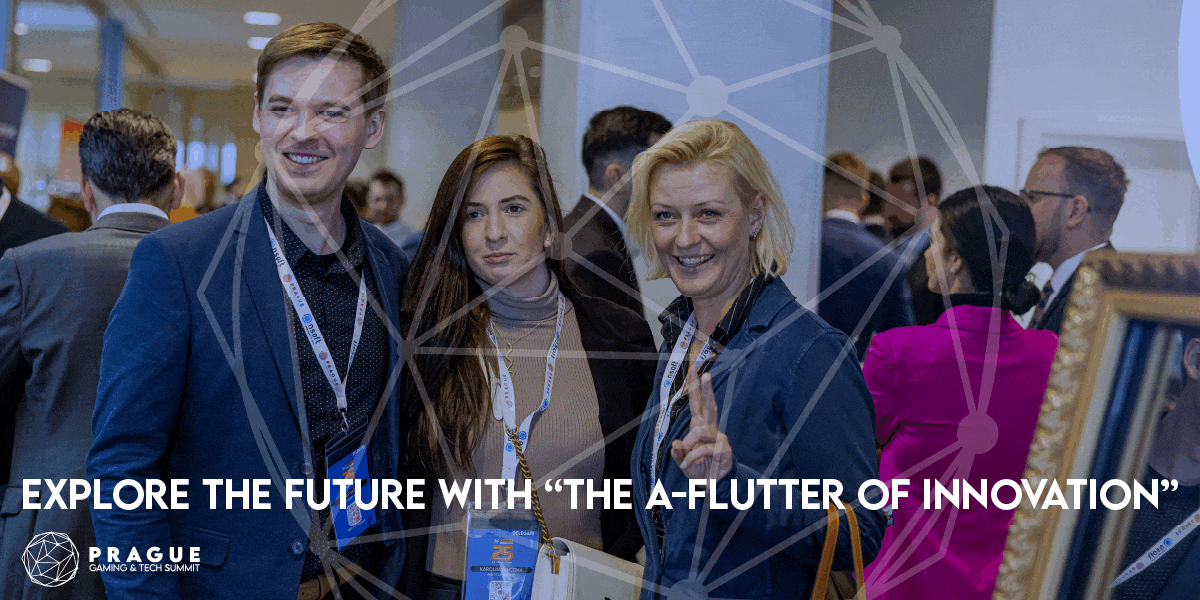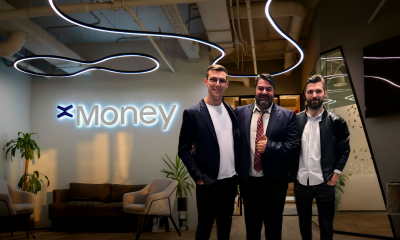Fintech
Shelley E. Parratt, Acting Director of the Division of Corporation Finance, to Conclude SEC Career After 35 Years of Service

Washington, D.C.–(Newsfile Corp. – January 19, 2021) – The Securities and Exchange Commission today announced that Shelley E. Parratt, Acting Director of the SEC’s Division of Corporation Finance, is retiring next month after 35 years of service to the Commission. Ms. Parratt joined the SEC’s Division of Corporation Finance in 1986, served as its deputy director since 2003, and served as Acting Director of the Division three separate times.
“Shelley has been an impactful leader at the Commission for decades and her contributions to the Division of Corporation Finance during her tenure are remarkable,” said SEC Acting Chairman Elad Roisman. “During her career, she served on the leadership team of seven different Division Directors and led the Division’s efforts to address a wide range of market and congressional developments. Shelley epitomizes the dedication and expertise that are hallmarks of the SEC’s professionals, and we owe her a great debt of gratitude for her decades of public service.”
“It has been an honor and a privilege to work at the SEC and serve as a member of the Division of Corporation Finance,” said Ms. Parratt. “I am thankful for the opportunity to have served on the leadership teams of the last seven Division Directors and as Deputy Director to Bill Hinman, Keith Higgins, Meredith Cross, John White and Alan Beller. I am also thankful for having had three opportunities to lead the Division’s staff as Acting Director. I will forever stand in awe of the staff’s passion for public service and steadfast commitment to investors and our markets in the face of any challenge. I am proud of everything the Division accomplished during my tenure and my fondest memories will be of the friendships I have made with the women and men of the SEC.”
Ms. Parratt joined the Division of Corporation Finance as a financial analyst in 1986. Over the years, she has received a number of honorary awards recognizing her service to the Commission and the Division, including the Distinguished Service Award, the SEC’s highest honorary award. She received her MBA from Syracuse University and her BA from St. Lawrence University.
Addressing Significant Market Developments to Ensure That Investors Receive Timely and Material Information
Having led the Division’s Disclosure Program for more than 25 years, Ms. Parratt guided it through consequential changes in the capital markets, unprecedented economic events and national challenges, always with a focus on fulfilling the SEC’s mission to the benefit of investors and the U.S. capital markets.
In response to the 2008 financial crisis, Ms. Parratt implemented a program to continually monitor the disclosures of the largest financial institutions – a critical first step in the Division’s current work to proactively identify and address risks to investors and markets.
More recently, under Ms. Parratt’s leadership, the Division promptly responded to the economic impacts of COVID-19, and related challenges presented to investors and our markets, by providing comprehensive guidance to reporting companies about their disclosure obligations, monitoring disclosures on a real-time basis and providing updated guidance in response, and assisting companies as they complied with the Commission’s modified filing requirements. Ms. Parratt orchestrated similar Division responses to other emergencies and events that presented challenges to investors and the markets during her long tenure, including the terrorist attacks of Sept. 11, 2001, and natural disasters such as hurricanes.
Providing Timely Guidance; Transparency
Ms. Parratt also led the Division’s efforts to provide timely guidance to public companies as they sought to comply with the reporting requirements of the federal securities laws. Over the last decade, the Division issued Disclosure Guidance Topics and other guidance on a wide array of issues in response to, and in anticipation of, significant market events. Examples include Disclosure Guidance Topics on special purpose acquisition companies (SPACs), China-based issuers and cybersecurity, as well as other topics such as sovereign debt exposures and intellectual property and technology risks.
Under Ms. Parratt’s leadership, the Division began issuing “Dear CFO Letters” to provide chief financial officers of public companies valuable insights into the Division’s perspective on a broad range of disclosure and financial reporting matters. In addition, Ms. Parratt led the Division to monitor an array of disclosure topics and provide guidance leading companies to enhance their disclosures in areas such as executive compensation disclosures and compliance with the requirements of International Financial Reporting Standards. In every instance, she sought to improve the disclosures investors use to make informed investment and voting decisions.
Ms. Parratt has been committed to making the Division’s work transparent to provide companies, investors and market participants with insight into the Division’s perspective. She led Division efforts to provide all market participants with access to filing review correspondence shortly after the Division completes a filing review, as well as many Division initiatives to provide public notice of staff and Commission actions.
Implementing Significant Congressional Mandates and Commission Initiatives to Benefit Markets and Investors
Ms. Parratt led the Division’s efforts to implement of a number of investor protection and capital formation efforts in response to substantial congressional, regulatory and market developments. For example, Ms. Parratt led the Division’s efforts to develop new strategies and risk-based selective filing review criteria and to embark on a substantial hiring effort to fulfill the mandatory review requirements of the Sarbanes-Oxley Act of 2002. The Division has subsequently met or exceeded this review mandate every year.
Ms. Parratt also implemented comprehensive changes to better position the disclosure review program to monitor and react to the new realities of the public company capital formation environment following the Commission’s adoption of the Securities Offering Reform rules. In addition, Ms. Parratt led the Division-wide effort to identify and implement strategic disclosure program enhancements and internal controls and procedures to comply with the Dodd-Frank Wall Street Reform and Consumer Protection Act mandates. Additionally, in the immediate response to the Jumpstart Our Business Startups (JOBS) Act, she led the SEC’s efforts to restructure the EDGAR filing system and disclosure review protocols to accept and review confidential draft registration statements.
Leading the Division through Changing Landscapes and Preparing it for the Future
Throughout her years in leadership, Ms. Parratt continually focused on ensuring the Division’s organizational structure was positioned to better protect investors and facilitate capital formation. Most recently, she led the realignment of the disclosure program to focus on industry specialization and to enhance how it aligns its review strategies with evolving risks.
Throughout her tenure, Ms. Parratt served as a trusted mentor for countless current and former SEC staff members. As one of the longest serving female senior executives at the SEC, Ms. Parratt used her role to mentor and promote women into leadership roles. Always focused on the present and future needs of the Division, she helped lead the Division’s efforts to enhance diversity and inclusion, knowledge management and staff training with a primary focus on developing the Division’s future leaders. SEC Chair Mary Jo White recognized these efforts by presenting her with the Leading for the Future award in 2016, a highlight of Ms. Parratt’s professional career.
Fintech
Former MD of SUI Foundation, Greg Siourounis, Joins xMoney Global as Co-Founder and CEO to build MiCA-Regulated Stablecoin Platform
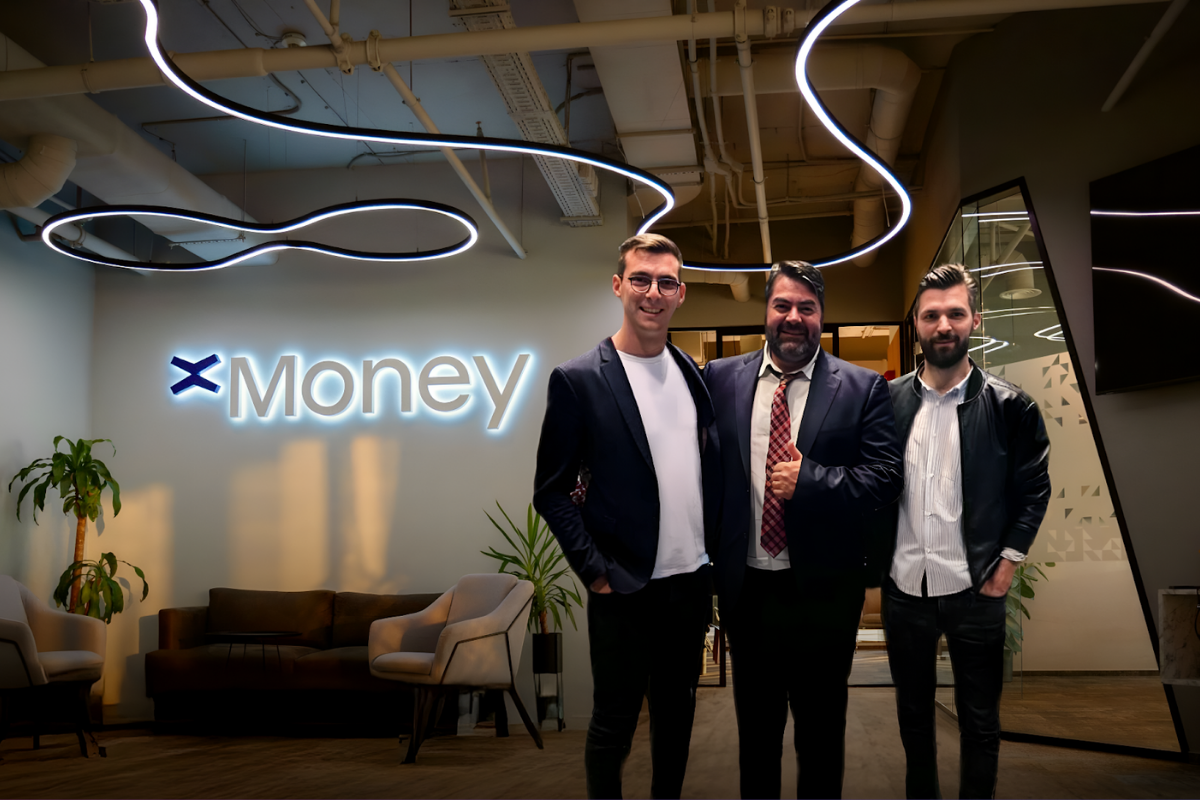
xMoney Global, the global, inter-bank and cross crypto/fiat integrated payments platform has appointed award-winning economist Dr. Greg Siourounis as Co-Founder and CEO. The company is a Mastercard principal member, with strategic European licenses, such as e-Money and VASP.
As the digital landscape continues to evolve with the coming MiCA regulation, xMoney Global intends to lead Europe into this new transformative EU regulated stablecoin era. Greg Siourounis will lead the integration of xMoney’s advanced blockchain-enabled payments infrastructure with its upcoming stablecoin program. Stablecoins are a key driver of blockchain adoption in today’s market, now surpassing Bitcoin, remittances, and PayPal in annual transaction volume. As such, xMoney’s Global reputation positions it to bridge Web3 innovation with traditional finance, leading Europe into a new transformative EU regulated stablecoin era.
Dr. Greg, who has played a pioneering role in the growth of Sui Foundation as its former Managing Director and who previously founded Everypay, will drive xMoney Global’s next wave of growth. Beyond the standard reference of his academic work in 2024’s Nobel Prize in Economics, Dr. Greg’s career is also decorated with awards such as the 2005 Young Economist Award from The European Economic Association and the 2008 Austin Robinson Prize from The Royal Economic Society. His immediate target will be to focus on partnerships, regulatory alignment and market expansion, as xMoney Global looks to build a comprehensive payments platform that bridges legacy financial systems with the potential of decentralized finance.
Commenting on his appointment, Dr. Greg Siourounis, CEO of xMoney Global, said, “As Europe prepares to embrace MiCA regulation, xMoney Global is positioned to redefine what compliant, secure, and seamless digital payments can be. Our goal is to deliver a solid and trusted ecosystem that combines the strengths of traditional finance with the flexibility of blockchain technology to create a future-ready payment experience.”
Beniamin Mincu, Co-founder of MultiversX, said, “xMoney Global’s mission aligns perfectly with the vision of MultiversX to bring scalable and secure blockchain solutions to mainstream finance. This appointment marks a significant step toward building a more inclusive and resilient financial system.”
The launch of xMoney Global aims to offer a next-gen blockchain-as-a-service module backed by its native stablecoin, with key white-labeled services including acquiring, issuing, onramps/offramps and a sticky loyalty program, all backed by MultiversX’s state-of-the-art sharding technology. Following the surge in crypto markets after Trump’s pro-crypto Presidential win, xMoney will be ideally placed to accelerate real-world adoption as the easiest way for everyone (consumers, retail and e-commerce) to seamlessly access fiat and crypto currencies in an app, card or payment gateway.
The post Former MD of SUI Foundation, Greg Siourounis, Joins xMoney Global as Co-Founder and CEO to build MiCA-Regulated Stablecoin Platform appeared first on News, Events, Advertising Options.
Fintech
Fintech Pulse: A Daily Dive into Industry Innovations and Developments

The financial technology sector continues to evolve at a rapid pace, offering innovations that disrupt traditional paradigms. Today’s briefing underscores fintech’s diverse growth avenues: from substantial venture capital plays and strategic partnerships to groundbreaking implementations in lending. Here’s a closer look at recent developments shaping the landscape.
Synapse’s Comeback and Andreessen Horowitz’s Strategic Bet
Source: Axios
Synapse, a financial infrastructure company previously embattled by controversy, is staging a remarkable comeback, backed by none other than venture capital heavyweight Andreessen Horowitz (a16z). With this new infusion of funds, Synapse aims to consolidate its position as a premier platform for building financial services tools.
This resurgence demonstrates the resilience of the fintech ecosystem, where innovation often prevails over turbulence. Synapse’s renewed vigor also signals that top-tier investors remain bullish on infrastructural solutions pivotal to the future of digital finance. Andreessen Horowitz’s participation not only validates Synapse’s model but also underscores the VC giant’s enduring interest in fintech infrastructure, even amid global economic uncertainties.
Analysis:
This partnership exemplifies the dynamism within fintech, highlighting the interplay of innovation, capital, and resilience. It also raises questions about the broader implications of giving second chances to firms with turbulent histories. While Synapse’s evolution could inspire others, it also places a spotlight on governance and accountability in high-growth sectors.
Israel’s Fintech Scene Gets a Boost with Investment in Finova Capital
Source: Calcalistech
Israeli fintech startup Finova Capital has raised an impressive $20 million in a funding round led by prominent institutional investors. This marks a significant milestone for the company as it seeks to expand its suite of financial solutions aimed at underserved markets.
Israel’s fintech ecosystem has long been recognized as a hub of innovation, and this latest investment only reinforces its global standing. Finova Capital’s focus on empowering smaller businesses and fostering financial inclusivity aligns with emerging trends where tech-driven solutions bridge critical gaps in financial services.
Analysis:
With this funding, Finova is poised to enhance its technological offerings while contributing to economic inclusion. However, the broader fintech industry will watch closely to see how the company leverages this capital amid increasing competition from regional and global players.
India’s Yubi Plans a Fundraising Push
Source: Bloomberg
Yubi, a prominent Indian fintech platform backed by Insight Partners, is reportedly preparing for a new fundraising round. Having already established itself as a leader in credit infrastructure, Yubi aims to bolster its offerings and expand its market footprint.
India’s fintech landscape is witnessing explosive growth, with platforms like Yubi playing a critical role in the credit ecosystem. Yubi’s planned fundraising reflects the broader appetite for scaling solutions that streamline credit access, particularly in emerging markets where traditional lending models often fall short.
Analysis:
This development highlights two key trends: the increasing reliance on credit platforms in high-growth economies and the strategic role of international investors like Insight Partners in driving fintech innovation. Yubi’s expansion plans could set a precedent for other regional fintech players seeking to scale amid global economic headwinds.
Provenir and Hastings Financial Services Win Global Recognition
Source: Business Wire
In a testament to the transformative power of digital lending solutions, Provenir and Hastings Financial Services have been jointly recognized for the Best Digital Lending Implementation at the IBSi Global Fintech Innovation Awards. This accolade underscores the success of their collaboration in modernizing the lending process through cutting-edge technology.
Provenir’s advanced decision-making platform and Hastings Financial Services’ lending expertise have delivered a solution that significantly enhances user experience, operational efficiency, and risk management. Such innovations highlight the increasing role of partnerships in advancing fintech’s digital transformation.
Analysis:
This recognition not only validates the efficacy of digital lending but also emphasizes the importance of partnerships in driving innovation. It signals to the industry that collaboration can be a powerful tool for staying ahead in a rapidly evolving marketplace.
Microf and Quantum Financial Technologies Forge New Alliances
Source: PR Newswire
Microf, a financial solutions provider, has announced a strategic partnership with Quantum Financial Technologies. This collaboration aims to expand lending solutions for contractors, providing streamlined access to capital for businesses in need of flexible financing options.
This partnership is a timely response to the growing demand for specialized financial products in niche markets. By leveraging Quantum’s technology, Microf can now offer more tailored solutions, particularly to contractors navigating complex financial requirements.
Analysis:
This development reflects a growing trend: the diversification of fintech offerings to serve specific market segments. As competition in mainstream fintech intensifies, targeting underserved niches could become a defining strategy for success.
Key Takeaways for the Fintech Ecosystem
- Resilience in Fintech Funding: Despite economic uncertainties, venture capital continues to fuel innovative fintech players like Synapse and Finova Capital.
- Regional Growth Stories: From Israel to India, fintech ecosystems are thriving, attracting global attention and investment.
- Collaboration as a Catalyst: The success of partnerships like Provenir-Hastings and Microf-Quantum underscores the importance of strategic alliances.
- The Power of Recognition: Awards like the IBSi Fintech Innovation Awards validate industry achievements, inspiring others to push the envelope.
- Focus on Inclusion: Whether through credit platforms or lending solutions, fintech is playing a pivotal role in fostering financial inclusivity worldwide.
Looking Ahead: Challenges and Opportunities
The fintech sector’s journey is far from linear. Regulatory complexities, technological disruptions, and market volatility remain persistent challenges. However, as seen in today’s developments, the opportunities far outweigh the risks. By prioritizing innovation, collaboration, and inclusivity, fintech players can navigate the complexities of the global financial landscape.
This moment in fintech history is pivotal. It’s a time for bold decisions, strategic partnerships, and a commitment to bridging financial divides. As industry players rise to the occasion, the road ahead promises a future where technology and finance intertwine to empower individuals and businesses alike.
The post Fintech Pulse: A Daily Dive into Industry Innovations and Developments appeared first on News, Events, Advertising Options.
Fintech
Fintech Latvia Association Releases Fintech Pulse 2024: A Guide to Latvia’s Growing Fintech Hub
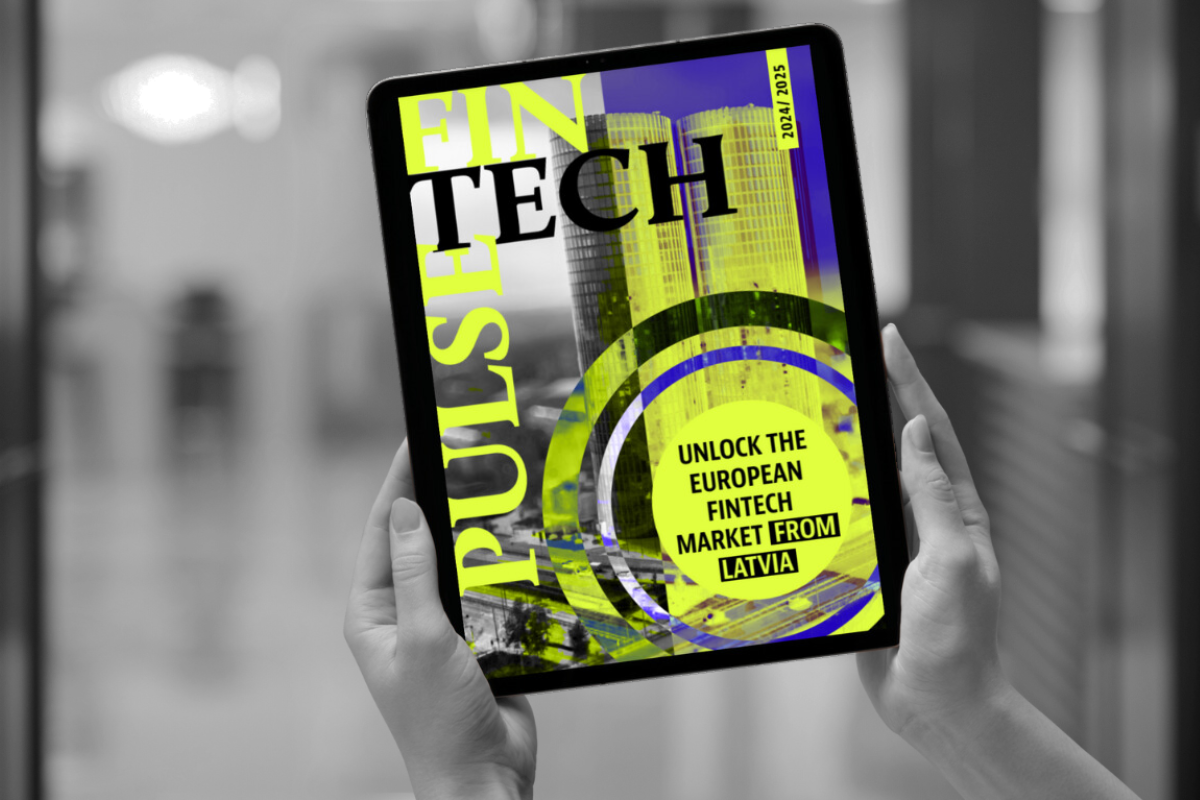
The Fintech Latvia Association has launched the latest edition of its annual publication, Fintech Pulse 2024, unveiling insights and resources that position Latvia as a thriving hub for European fintech.
Announced at this year’s Fintech Forum, the magazine is now available in digital format, offering a comprehensive guide for fintech professionals and entrepreneurs navigating the Latvian market and exploring its advantages.
This issue covers essential topics, from support tools provided by Latvijas Banka and newcomer roadmaps to Riga’s investor resources and fintech education opportunities. Readers will find the latest fintech news from Latvia, coverage of this year’s key industry events, and member insights on the future of fintech. The Fintech Landscape section provides a comprehensive overview of the Latvian fintech ecosystem.
Tina Lūse, Managing Director of Fintech Latvia Association, expressed excitement about the ecosystem’s growth: “We are excited to unveil the third annual edition of Fintech Pulse. This year has been pivotal for our ecosystem, and together with public sector stakeholders, we are enhancing financial inclusion, democratizing investments, and driving innovation throughout the sector. This is a testament to Latvia’s emergence as a fintech hub, establishing itself as an equal partner in innovation and support within the Baltic region.”
Minister of Finance Arvils Ašeradens highlighted Latvia’s fintech potential in the magazine, stating: “Latvia has already made strides in adapting its regulatory framework to support a stable financial system. Now, we encourage financial market players to invest in modern technologies to meet the growing demand for inclusive financial services and solidify Latvia’s position in the fintech landscape. We are confident that with the combined offer of the government, Latvijas Banka and Riga city, we are a great place to start your next scalable European FinTech!”
Minister of Economics Viktors Valainis expressed Latvia’s ambition in the magazine, stating: “Latvia wants to become a WEB 3.0. innovation hub and solidify itself as one of the leaders of a newly regulated EU crypto-asset market. We welcome international companies to choose Latvia, a flexible and fast-paced country, where you can obtain a MICA license in just 3 months. Open your office in Latvia, receive a MICA license and serve the whole EU market!”
The Fintech Latvia Association brings together fintech and non-banking financial service providers to represent their interests at both the national and international levels. It promotes sustainable development in Latvia’s financial sector by fostering reliable, responsible, and long-term industry practices that earn trust from consumers and regulatory authorities. The association is committed to supporting innovation and growth opportunities within the fintech landscape.
The post Fintech Latvia Association Releases Fintech Pulse 2024: A Guide to Latvia’s Growing Fintech Hub appeared first on News, Events, Advertising Options.
-

 Fintech7 days ago
Fintech7 days agoFintech Pulse: Industry Updates, Innovations, and Strategic Moves
-

 Fintech6 days ago
Fintech6 days agoFintech Pulse: Daily Industry Brief – A Dive into Today’s Emerging Trends and Innovations
-
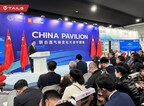
 Fintech PR7 days ago
Fintech PR7 days agoTAILG Represents the Industry at COP29, Advancing South-South Cooperation with Low-Carbon Solutions
-

 Fintech PR5 days ago
Fintech PR5 days agoAlkira Ranked 25th Fastest-Growing Company in North America and 6th in the Bay Area on the 2024 Deloitte Technology Fast 500™
-

 Fintech PR7 days ago
Fintech PR7 days agoThe CfC St. Moritz Announces New Speakers from BlackRock, Binance, Bpifrance, Temasek, PayPal, and More for Upcoming 2025 Conference
-

 Fintech PR5 days ago
Fintech PR5 days agoCorinex Ranked Number 331 Fastest-Growing Company in North America on the 2024 Deloitte Technology Fast 500™
-

 Fintech PR7 days ago
Fintech PR7 days agoGift Card Market to Reach USD 1,897.46 Billion Globally by 2030, Driven by Digital Adoption and Corporate Gifting | Credence Research Inc.
-

 Fintech PR7 days ago
Fintech PR7 days agoSecureworks to Report Third Quarter Fiscal 2025 Financial Results on December 4, 2024

